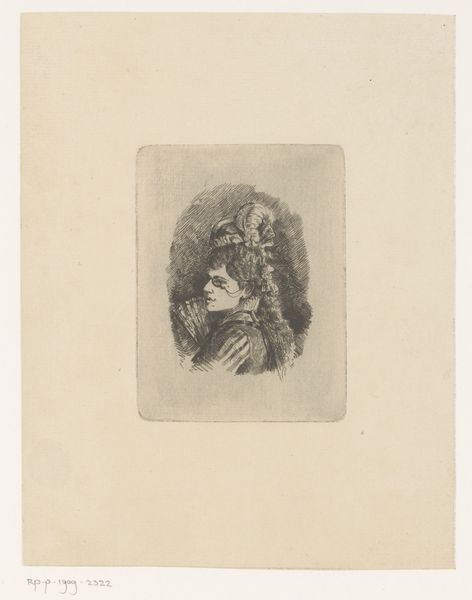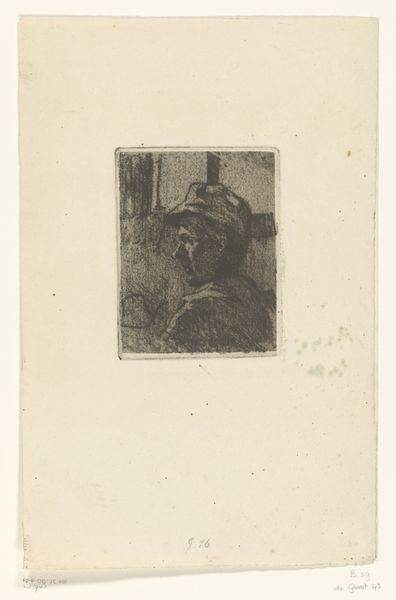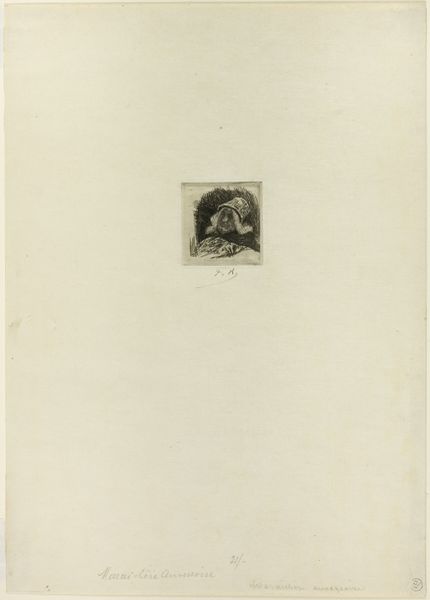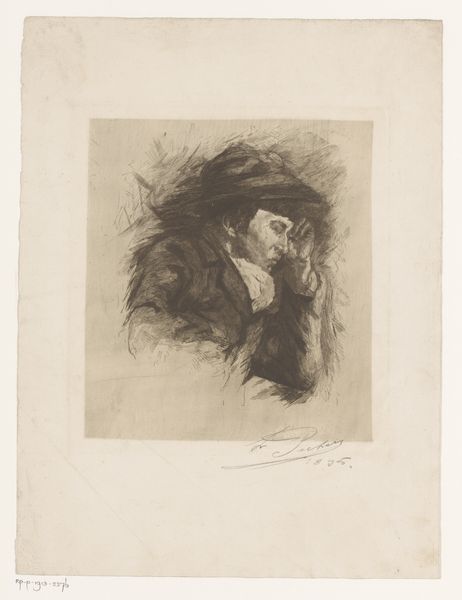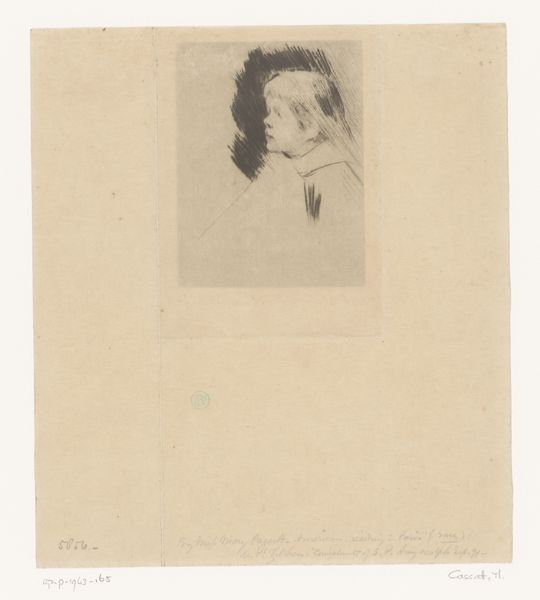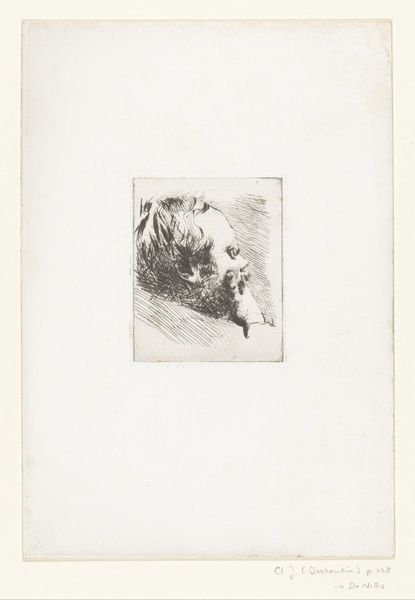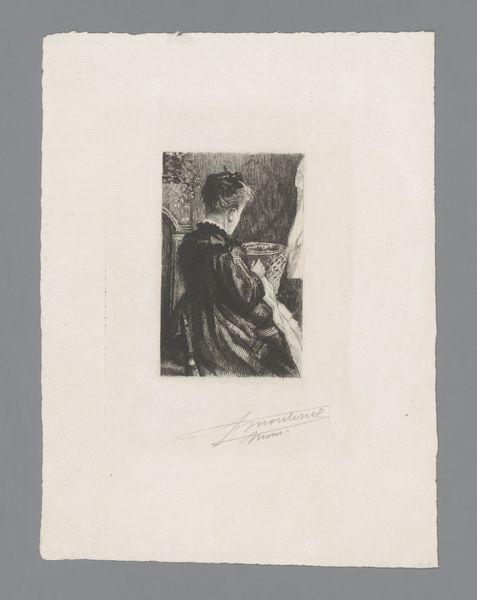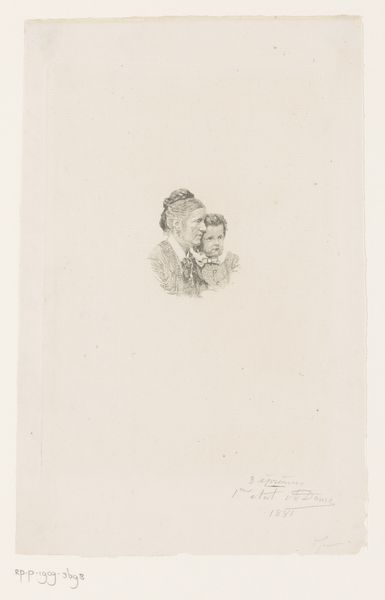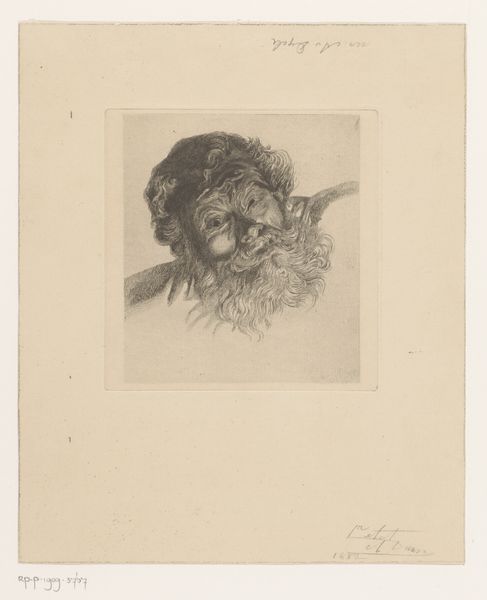
print, etching, paper, graphite
#
portrait
# print
#
etching
#
paper
#
graphite
#
realism
Dimensions: height 149 mm, width 107 mm
Copyright: Rijks Museum: Open Domain
Curator: Looking at this portrait, I immediately feel a sense of introspection, almost melancholy. There's a weight in the lines, isn't there? Editor: Absolutely. Here we have Willem Witsen's "Portret van Anton Mauve," an etching with graphite on paper, likely created between 1887 and 1888. Mauve was, of course, a prominent figure in the Hague School. This work speaks volumes about artistic communities and their internal portraits of esteem. Curator: It’s interesting to consider what Witsen wants to say about Mauve with this work. The shadowy strokes around his head makes me think of thought swirling within him; all in his face, etched as a roadmap across his skin. Do you get the sense of respect conveyed, or something more critical, perhaps? Editor: That's astute. Given the era, portraiture functioned within networks of patronage and artistic recognition. Mauve's success definitely paved the way for younger artists, including his nephew, Vincent van Gogh. Witsen, embedded in Amsterdam’s art circles, positions Mauve through a nuanced lens – an established master seen through the eyes of an emergent peer. The etching is almost confrontational. Curator: It feels very raw, in a good way! The detail isn’t labored over. There is freedom of his creative self! That lack of over-refinement, of smoothing, somehow deepens its sincerity for me. Like the unguarded expression we give friends Editor: Precisely! This realism in its social context emphasizes accessibility, challenging traditional idealized portraiture that served elitist and state powers. Curator: This work and your insights have shifted how I perceived that expression, and that context enriches it immeasurably for me. Editor: I appreciate your perspective. Analyzing such works allows us to understand how even portraits played into larger social, creative, and political trends.
Comments
No comments
Be the first to comment and join the conversation on the ultimate creative platform.
